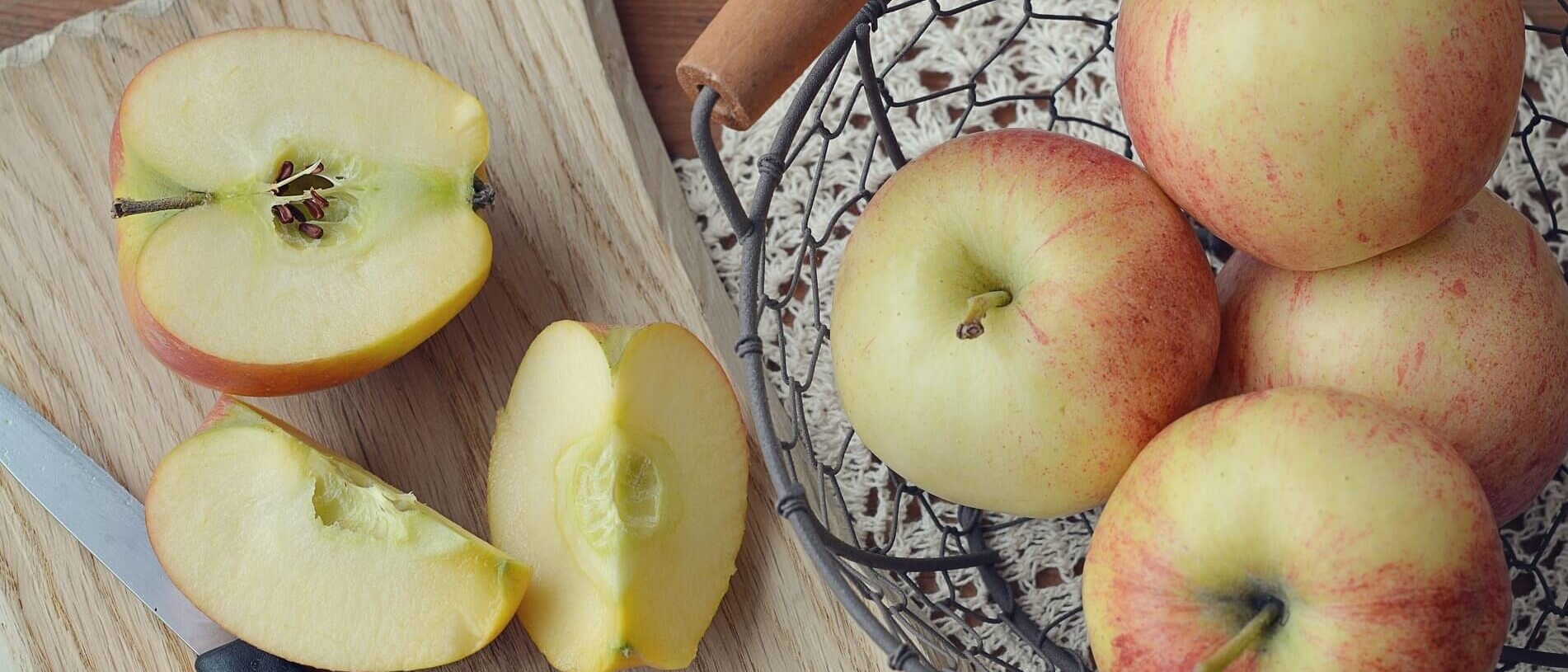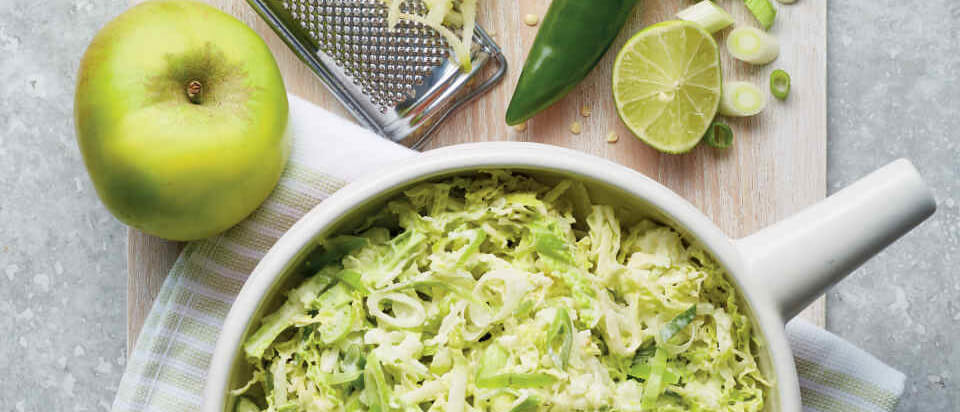



Key information
Colour: Usually red, green or yellow.
In season: Some apples are in season all year round, but in the UK the most common apple varieties are at their best during the colder months of autumn, winter and into spring. For example, Royal Gala apples are in season from late September to early May, Jazz apples from November to May and Braeburns from late December to May.
Power to perform: Most of us need to eat more fibre in our diets. Fibre helps us feel fuller, supports healthy digestion and lowers the risk of some diseases. Eating lots of different of fruits and vegetables, such as apples (with the skins on!) is a great way to get more fibre, alongside other vitamins that the body needs.
Grow me: The best place for planting an apple tree is a sunny, sheltered spot with well-drained soil. Winter is generally the best time to plant a new tree. Once planted, the trees don’t need much care – just water in any times of drought and when fruit starts to swell, and prune (cut back) once a year to encourage a good crop of apples. (Although remember that a new tree will take a few years to produce its first apples!)
Did you know?

Ideas garden
Remember to ask an adult's permission before experimenting with any apple ideas!
Apples can be used to explore all kinds of science. How about trying out our ‘Browning Apples’ science experiment to explore what causes apples to go brown and how this can be prevented?
For another science experiment, start off with the question of ‘do apples float’? Make a prediction, get a large bowl of water and test for yourself!*
Go further: Once you’ve tested your whole apples, extend the experiment by creating apple boats! You will need apple slices of different shapes and sizes, cocktail sticks, paper and card (to cut into sails), scissors and your big bowl or tub of water. What type of apple slice do you think will make the fastest boat, or the most stable? (E.g. a whole apple half, a quarter, or thin slice?) What is the best shape for your sail? (Triangle, square, circle.) Write down your predictions, then test each boat to find the answer.

From baking tarts and crumbles to preparing a classic roast dinner side dish, apples can be used in a wide variety of recipes. Try something new with a spiced apple slaw – grating apple and lime to mix with sliced cabbage, spring onions, chilli, black pepper and mayonnaise. A great alternative to classic coleslaw!
Or, for a simple fruity dessert, try out a baked apple recipe. Remove the core from an apple, stuff with sultanas and drizzle with orange juice (with a sprinkle of ground ginger). Bake in the oven for 20–25 minutes and enjoy with some cream! This is a great recipe for getting creative – try stuffing the apples with different fruits, drizzling lemon rather than orange juice, or using different spices. What will you make?

Ask an adult to share your apple adventures with us on social media using #GetSetEatFresh or by uploading a showcase on the Get Set to Eat Fresh community page.
*Apples will float because they contain air pockets – in fact they are 25% air – this makes them less dense than water.
